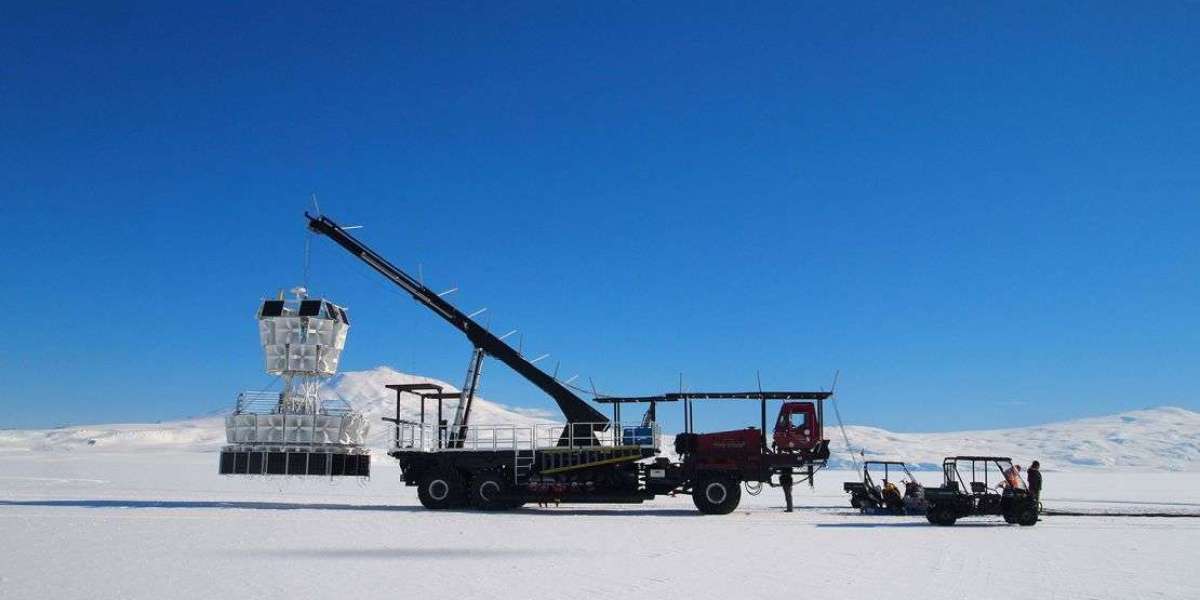Headlines about “mysterious radio signals from beneath Antarctic ice” come from a handful of puzzling detections by ANITA—the NASA‑sponsored Antarctic Impulsive Transient Antenna balloon experiment. Across four flights (2006–2016), ANITA logged millions of ordinary radio blips plus a few events that looked as if powerful particle showers burst upward from the ice. Standard physics says that should almost never happen at the extreme energies involved. Here’s what we actually know.
How ANITA Works
Drifting ~35 km above Antarctica, ANITA’s antennas capture nanosecond radio flashes. Two expected signal types dominate:
Reflected cosmic‑ray air showers: down‑going cosmic rays hit the atmosphere; radio reflects off the ice with a polarity flip.
Upward Askaryan bursts from neutrino interactions in ice: radio exits directly, no flip.
Analysts combine polarity, polarization, timing, and direction to classify events and reject human radio noise.
The Weird Ones
Most data are reflected cosmic rays. Outliers:
Two upward‑going, non‑inverted, below‑horizon events in Flights I & III—classic “ANITA anomalies.”
Four near‑horizon non‑inverted events in Flight IV (2016) that also resist the reflected‑cosmic‑ray label.
That’s the entire anomalous sample to date.
Why They’re Hard to Explain
At ~EeV energies, Earth is largely opaque to Standard Model neutrinos over the chord lengths implied by the events. Getting a neutrino through the planet and energetic enough on exit to trigger a radio‑loud air shower is extraordinarily unlikely. Yet the waveforms show non‑inverted polarity, the hallmark of direct (upward) emission.
Could It Be Instrumental?
ANITA applied strict noise cuts and estimated low backgrounds, but reconstruction uncertainties (surface roughness, gain, timing) could bias angle or polarity. Re‑analyses continue, especially for the near‑horizon set.
Ice Layers as Trick Mirrors
Internal firn density changes or buried crusts can, in principle, produce subsurface reflections without polarity flip. A down‑going cosmic‑ray shower reflecting from such a layer could mimic an upward event. Modeling supports plausibility; targeted radar surveys are needed to confirm.
What Other Observatories Say
IceCube: Dedicated searches found no matching neutrino excess in the directions of ANITA’s anomalies. Because tau‑neutrino regeneration should make IceCube very sensitive, this result rules out the remaining Standard Model source explanation.
Pierre Auger: A 2025 long‑baseline search for upward air showers (>110° zenith) yielded one background‑consistent candidate in >14 years. Flux limits strongly disfavor a real population of ANITA‑like upward showers.
Speculative New Physics
Ideas include heavy dark‑matter decay inside Earth, sterile neutrinos, and long‑lived exotic particles. All are constrained—and often squeezed hard—by IceCube and Auger. Interesting, but unconfirmed.
Next Steps: PUEO
To test the anomaly, a successor balloon—PUEO (Payload for Ultrahigh Energy Observations)—will fly with wider bandwidth, smarter triggering, and higher sensitivity. A launch window in the 2025–2026 Antarctic summer is being prepared. If the effect is real, PUEO should see more—and characterize it better.
Snapshot Status (July 2025)
ANITA recorded six non‑inverted, below‑/near‑horizon events across four flights. [1][2]
Standard neutrino propagation struggles to explain them. [1][2]
IceCube finds no supporting flux; Auger sets strong limits. [4][5]
Subsurface reflection remains viable; needs site measurements. [3]
PUEO data forthcoming; stay tuned. [6]
Sources (Direct Links)
Strong source links: [1] & [5] (peer‑reviewed).
[1] Gorham et al., Observation of an Unusual Upward-Going Cosmic-Ray-like Event in the Third Flight of ANITA, Phys. Rev. Lett. 121, 161102 (2018). https://doi.org/10.1103/PhysRevLett.121.161102
[2] Gorham et al., Unusual Near-Horizon Cosmic-Ray-like Events Observed by ANITA-IV, Phys. Rev. Lett. 126, 071103 (2021). https://doi.org/10.1103/PhysRevLett.126.071103
[3] Shoemaker et al., Reflections on the Anomalous ANITA Events: The Antarctic Subsurface as a Possible Explanation, Annals of Glaciology 61(81) 92–98 (2020). https://doi.org/10.1017/S026030552000019X
[4] IceCube Collaboration, IceCube rules out last Standard Model explanation of ANITA’s anomalous neutrino events (8 Jan 2020). https://icecube.wisc.edu/news/research/2020/01/icecube-rules-out-last-standard-model-explanation-of-anita-anomalous-neutrino-events/
[5] Abdul Halim et al. (Pierre Auger Collaboration), Search for the Anomalous Events Detected by ANITA Using the Pierre Auger Observatory, Phys. Rev. Lett. 134, 121003 (2025). https://doi.org/10.1103/PhysRevLett.134.121003
[6] NASA TechPort: PUEO – Payload for Ultrahigh Energy Observations (project 96520; accessed 23 July 2025). https://techport.nasa.gov/projects/96520
FAQ
Q1. Did signals actually come from inside Earth?
Not proven. They reconstructed as below‑horizon non‑inverted pulses; complex reflections could fake that.
Q2. Could it be aliens?
No. These are broadband impulses like particle showers, not patterned transmissions.
Q3. Why is IceCube’s null result important?
If an astrophysical source produced ANITA’s events, IceCube should have seen many more. It didn’t.
Q4. How many anomalous events exist?
Two classic upward events + four near‑horizon non‑inverted events = six total.
Q5. When might we get clarity?
After the planned PUEO flight (2025–2026 season).









NYC Sidewalk 14 w
Amazing how ANITA’s strange signals challenge standard physics and hint at mysteries still hidden beneath the Antarctic ice!